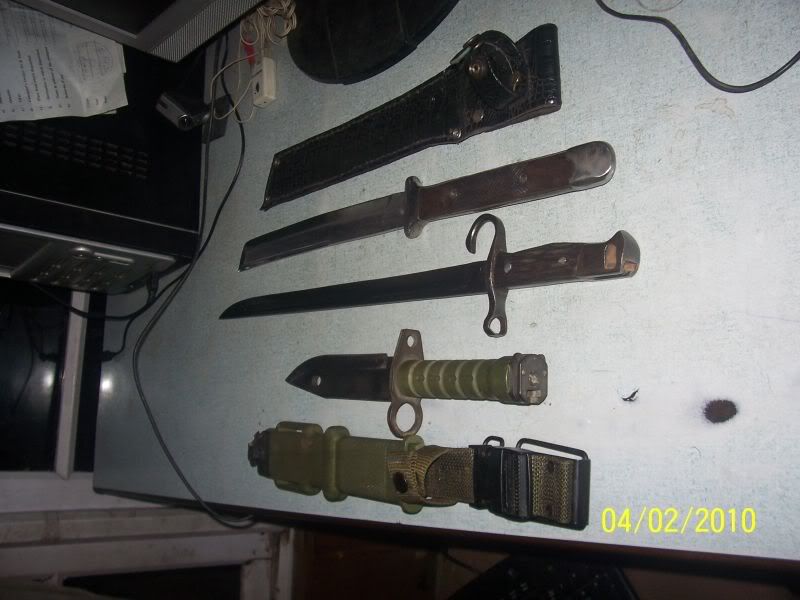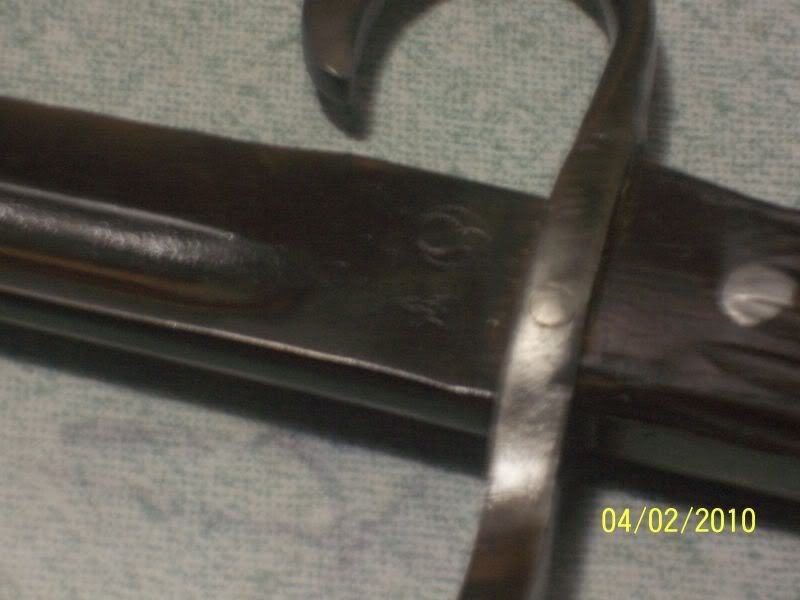The day before yesterday I was on my way onto something else when I spotted this with a seller in Tbilisi's flea-market. I have been looking for one for sometime, and when I spotted this one, I did not want to delay and miss-out like it happened the previous time. As I was not carrying a bag and did not want to get caught with a bayonet tucked in my waist while walking on the road, I offered the seller ten Georgian Laris as an advance.The seller laughed off my concern but I insisted. We shook hands and he put it away in his case.Went there yesterday and I picked this.
AKM Bayonet Type-II: Text from here
The AKM rifle was introduced in 1959. Among other things, the updated AK47 variant included a bayonet lug. Much easier and cheaper to manufacture than the AK47, production and use of the AKM went worldwide. The inclusion of a bayonet lug allowed for a more conventional bayonet. However, the new bayonet design, what we refer to as the AKM Type I, was far from conventional. It was as groundbreaking as the Kalashnikov itself. It incorporated a number of features, making for an incredibly versatile bayonet. The one-piece molded plastic grip & pommel; and stainless steel blade made the bayonet impervious to rust and rot. The unfullered clip-point blade had sawteeth along the spine. The steel scabbard body had a lug at the point that engaged a window cut into the blade, so that bayonet and scabbard could be combined as a wirecutter. The scabbard body had a rubber insulator, making it safe to cut electrified wire. The belt hanger was a clip-on affair that was cheap and easy to replace. A wrist strap was also included, for extra grip when using as a combat knife. A truly revolutionary design that continues to influence bayonet design to the present day.The improved AKM Type II bayonet was introduced in the mid-1960s and brought with it two significant changes. A squared-off steel pommel was added, to address the fragile nature of the Type I's bulbous plastic pommel. Revolutionary as it was, the Type I design couldn't change soldiers, who seem naturally inclined to use the pommel as a hammer. The second major change was a new scabbard. Advances in plastics technology had reached the point where the scabbard body could be made of molded plastic, with only a metal end for the wirecutter. This eliminated the need for a rubber insulator, as the plastic scabbard body was non-conductive.The AKM Type II bayonet was produced by Bulgaria (shown above), China, Iraq, East Germany, Russia, and Yugoslavia. Variations were also produced by India and Vietnam (the latter are thought to have been made for commercial sale, not military use).
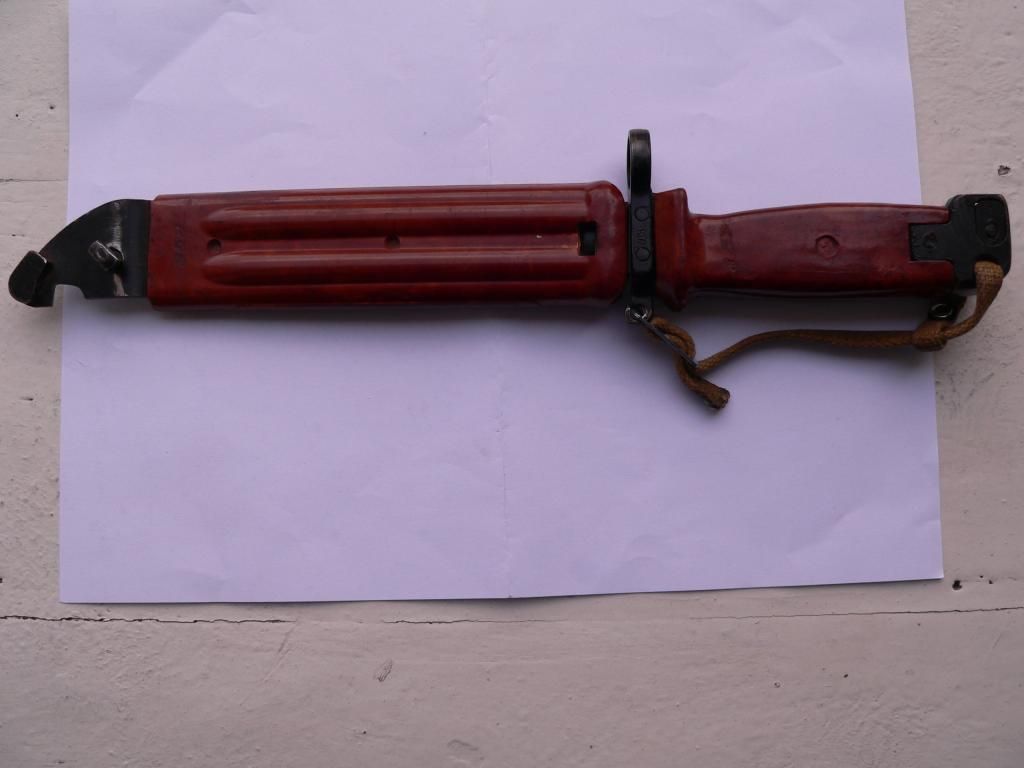
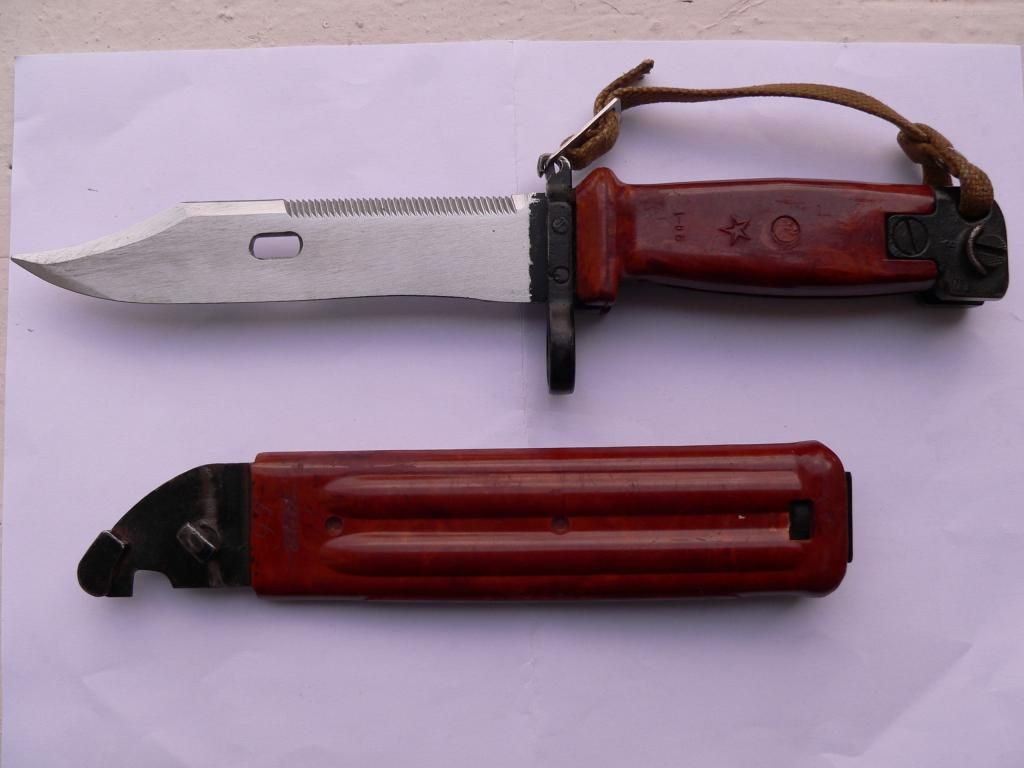
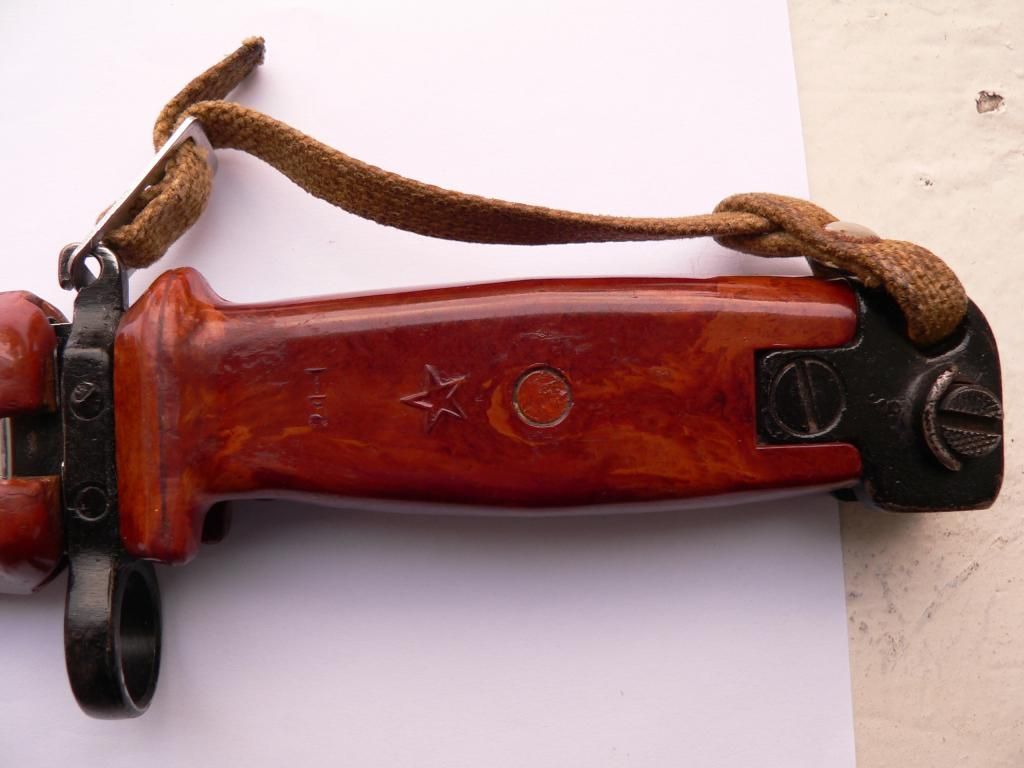
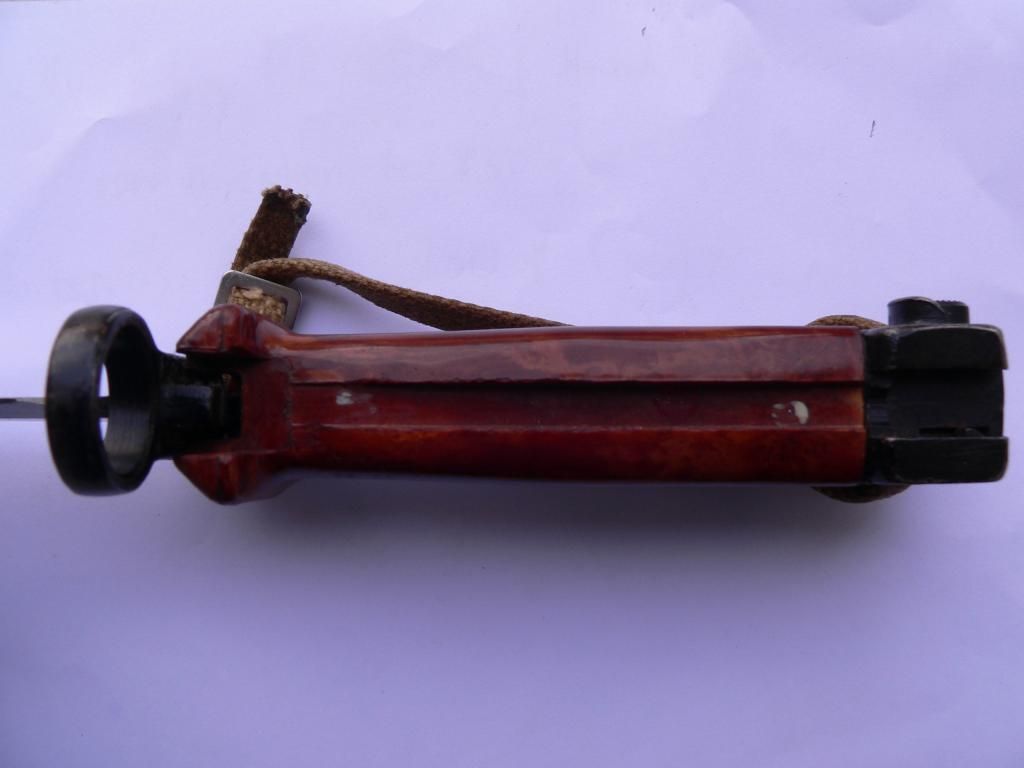
Displaying the wire-cutter feature. As the handle and the scabbard are insulated, it can be used to cut electric cables/wires too.
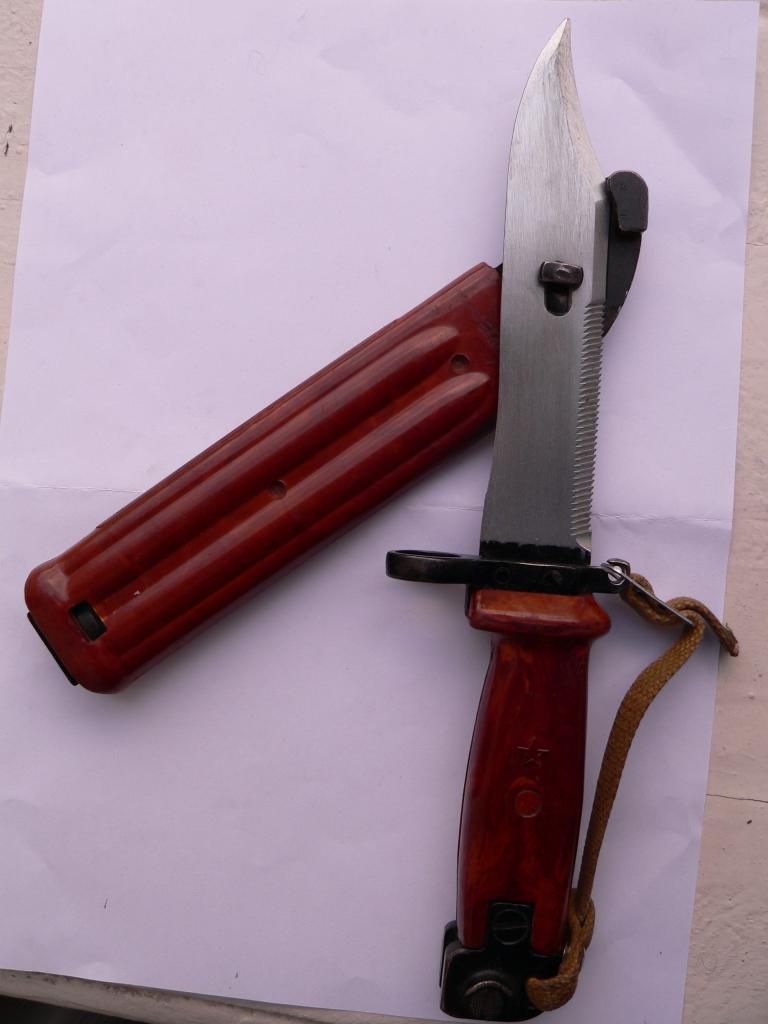
Serrations on the spine
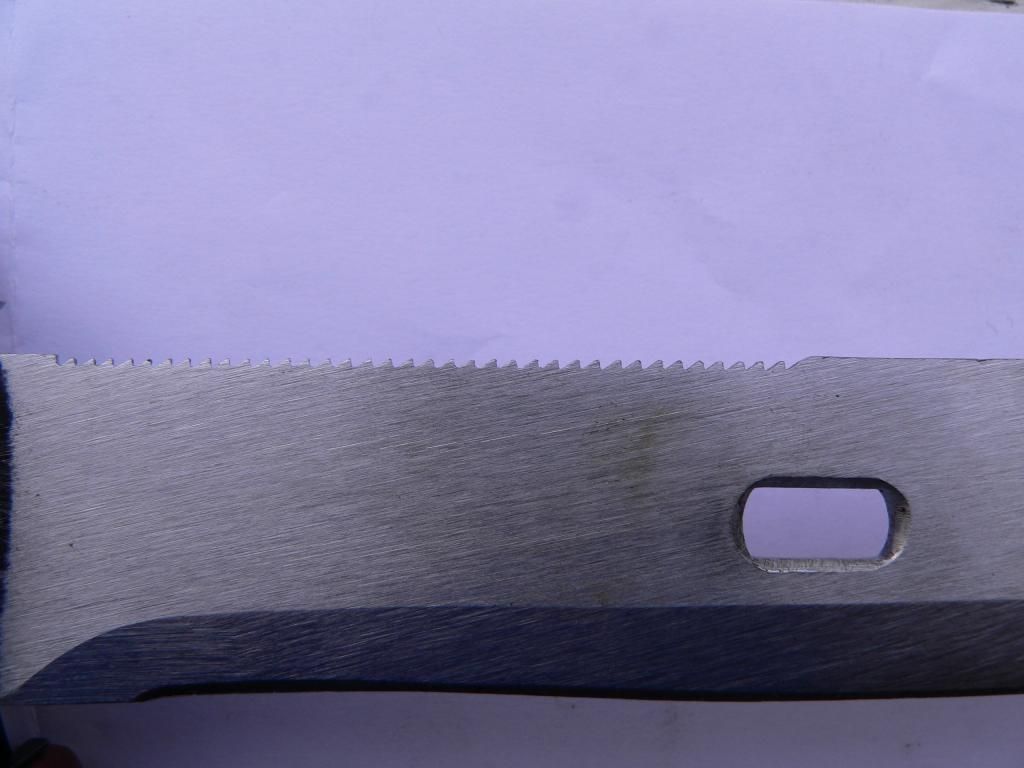
The scabbard has metal springs built in which hold the blade rather well and does not allow it to bounce out or too easily pulled out. That allows this bayonet to be used as a hammer

All in all, it is a very sturdy and purposeful looking instrument.
Best-
Vikram













